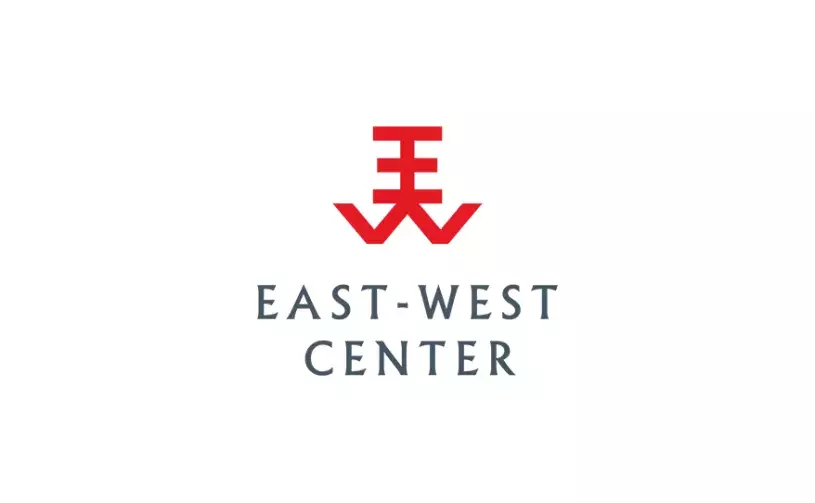Error message

By East-West Center
HONOLULU (Nov. 1, 2018)—How do the world’s two premier information-technology ecosystems—Silicon Valley and China—compete? How do they cooperate? And how has their relationship changed over the years?
In an annual China Town Hall event held at the East-West Center, analyst Matt Sheehan traced the relationship between technology sectors in China and the US and pointed out some current trends, particularly in frontier technologies such as artificial intelligence. Sheehan studies technology ties between China and California at the Paulson Institute.
Sheehan described four phases of the China/US technology relationship. He labeled the first phase “dependence.” From about 1994 to 2001, he said, Chinese experts who worked in US companies and universities and Chinese students who studied in the US returned home to help build up the nascent Chinese technology sector. “The flow of people, money, and ideas was all one-directional—from the US to China,” Sheehan noted.
He characterized the second phase, from 2002 to 2014, as “copycat competition” and said this was “when some of the most interesting battles played out.” During this period, new companies were founded in China modeled after existing US companies. The Chinese companies were not taken seriously at first, but in some cases they beat the Silicon-Valley companies at their own game.
From about 2002 to 2005, for example, Alibaba went into direct competition with eBay for the Chinese market in consumer-to-consumer sales. At first, Sheehan explained, “Alibaba was seen as kind of a joke. The assumption was that eBay would come into China, knock out the local competition, and own a billion new e-commerce customers.” But Alibaba founder Jack Ma understood the Chinese market. He pioneered new electronic payment methods and other features that were popular with the public, and within four years Alibaba drove eBay out of the Chinese market entirely.
Although the chain of events was more complicated, the Chinese company Baidu, founded in 2000, has replaced Google as the primary internet search engine in China, Sheehan added. And the messaging app WeChat, developed by the Chinese communications giant Tencent, has become one of the most-used mobile applications in the world.
Sheehan labeled the period from 2014 to 2017 as a time of “segmentation and synergy,” two words that on their face are opposites of each other. Their juxtaposition forms the core of what Sheehan labels “Silicon Valley’s China paradox.”
While at a corporate level US and Chinese companies were entirely separate, the flow of money, people, and ideas reached an all-time high during this period. “This is when you saw a lot of investors from China showing up in Silicon Valley, some prominent US researchers and engineers joining Chinese companies in positions of leadership, and ideas flowing in two directions,” said Sheehan. He noted that the concept of shared bicycles, now popular in US cities, started in China, and both Chinese and US companies have been active in the development of autonomous vehicles. Even while the relationship between the two national governments was in many ways going sour, “the relationship at the grassroots level, the technology relationship, was still very free-flowing,” he noted.
Sheehan suggested that the relationship has now entered a new and uncharted phase, which he termed the new “technology cold war,” with the US government asserting national policies in what was previously considered a private arena. This new phase has three dimensions, he said.
The first is an effort to disentangle the interconnected technology communities that bind the two countries together. In 2018, the US Congress passed the Foreign Investment Risk Review and Modernization Act (FIRRMA). This new legislation increases US government oversight and supervision of Chinese investment in Silicon Valley, Sheehan pointed out. The US State Department also began restricting visas for Chinese graduate students working in sensitive fields of science and technology.
The second dimension is heightened competition between US and Chinese companies in other countries. In general, “American companies know they can’t win in China, and Chinese companies know they can’t make a dent in the US market,” according to Sheehan. So US and Chinese companies are competing in markets such as India, Brazil, and Southeast Asia. Amazon, for example, is trying to “own the Indian e-commerce and payments market,” said Sheehan, but the Chinese are supporting local companies that offer competition.
The third dimension of the new “cold war” involves a race to develop frontier technologies. China and the US are entering the game-changing field of artificial intelligence on more-or-less equal footing, something that has never happened before, Sheehan said.
In many respects, he noted, the strengths and weaknesses of the two technology communities “oddly mirror each other.” The US has high-quality elite researchers, while China has a greater number of qualified engineers. The US is developing out-of-the-box ideas, while China focuses on practical applications. US developers have access to a diversity of data covering wide parts of the world, while the Chinese have a unique depth of data on each user within their own market.
Finally, while the US has very experienced and patient venture capitalists, the Chinese enjoy massive government support. And this support is not just in the realm of financing, according to Sheehan. It also includes a willingness to provide the infrastructure and enact the legislation that Chinese companies need in order to thrive.
Sheehan said three important questions that emerged during the early phases of China’s relationship with Silicon Valley have essentially been turned on their heads in recent years:
- “How will the global internet change China’s authoritarian politics?” has become “How will China’s authoritarian politics change the global internet?”
- “Can China thrive without access to Google?” has become “Can Google thrive without access to China?” or perhaps more precisely “What is Google willing to do to get back into China?”
- “Can Chinese companies innovate in an environment of censorship?” has become “Does the support provided by the Chinese government give their companies an unfair edge in technology innovation?”
Download a PDF version of this Wire article.
##
The East-West Wire is a news, commentary, and analysis service provided by the East-West Center in Honolulu. All or any part of the Wire content may be used by media with attribution to the East-West Center or the person quoted. To receive Wire articles via email, subscribe here. For links to all East-West Center media programs, fellowships and services, see www.eastwestcenter.org/journalists.
The full list of East-West Wires produced by the Research Program is available on the East-West Center website. For more on the East-West Center Research Program, see www.eastwestcenter.org/research.
The East-West Center promotes better relations and understanding among the people and nations of the United States, Asia, and the Pacific through cooperative study, research, and dialogue.
Series editors:
Derek Ferrar
[email protected]
Sidney B. Westley
[email protected]
By East-West Center
HONOLULU (Nov. 1, 2018)—How do the world’s two premier information-technology ecosystems—Silicon Valley and China—compete? How do they cooperate? And how has their relationship changed over the years?
In an annual China Town Hall event held at the East-West Center, analyst Matt Sheehan traced the relationship between technology sectors in China and the US and pointed out some current trends, particularly in frontier technologies such as artificial intelligence. Sheehan studies technology ties between China and California at the Paulson Institute.
Sheehan described four phases of the China/US technology relationship. He labeled the first phase “dependence.” From about 1994 to 2001, he said, Chinese experts who worked in US companies and universities and Chinese students who studied in the US returned home to help build up the nascent Chinese technology sector. “The flow of people, money, and ideas was all one-directional—from the US to China,” Sheehan noted.
He characterized the second phase, from 2002 to 2014, as “copycat competition” and said this was “when some of the most interesting battles played out.” During this period, new companies were founded in China modeled after existing US companies. The Chinese companies were not taken seriously at first, but in some cases they beat the Silicon-Valley companies at their own game.
From about 2002 to 2005, for example, Alibaba went into direct competition with eBay for the Chinese market in consumer-to-consumer sales. At first, Sheehan explained, “Alibaba was seen as kind of a joke. The assumption was that eBay would come into China, knock out the local competition, and own a billion new e-commerce customers.” But Alibaba founder Jack Ma understood the Chinese market. He pioneered new electronic payment methods and other features that were popular with the public, and within four years Alibaba drove eBay out of the Chinese market entirely.
Although the chain of events was more complicated, the Chinese company Baidu, founded in 2000, has replaced Google as the primary internet search engine in China, Sheehan added. And the messaging app WeChat, developed by the Chinese communications giant Tencent, has become one of the most-used mobile applications in the world.
Sheehan labeled the period from 2014 to 2017 as a time of “segmentation and synergy,” two words that on their face are opposites of each other. Their juxtaposition forms the core of what Sheehan labels “Silicon Valley’s China paradox.”
While at a corporate level US and Chinese companies were entirely separate, the flow of money, people, and ideas reached an all-time high during this period. “This is when you saw a lot of investors from China showing up in Silicon Valley, some prominent US researchers and engineers joining Chinese companies in positions of leadership, and ideas flowing in two directions,” said Sheehan. He noted that the concept of shared bicycles, now popular in US cities, started in China, and both Chinese and US companies have been active in the development of autonomous vehicles. Even while the relationship between the two national governments was in many ways going sour, “the relationship at the grassroots level, the technology relationship, was still very free-flowing,” he noted.
Sheehan suggested that the relationship has now entered a new and uncharted phase, which he termed the new “technology cold war,” with the US government asserting national policies in what was previously considered a private arena. This new phase has three dimensions, he said.
The first is an effort to disentangle the interconnected technology communities that bind the two countries together. In 2018, the US Congress passed the Foreign Investment Risk Review and Modernization Act (FIRRMA). This new legislation increases US government oversight and supervision of Chinese investment in Silicon Valley, Sheehan pointed out. The US State Department also began restricting visas for Chinese graduate students working in sensitive fields of science and technology.
The second dimension is heightened competition between US and Chinese companies in other countries. In general, “American companies know they can’t win in China, and Chinese companies know they can’t make a dent in the US market,” according to Sheehan. So US and Chinese companies are competing in markets such as India, Brazil, and Southeast Asia. Amazon, for example, is trying to “own the Indian e-commerce and payments market,” said Sheehan, but the Chinese are supporting local companies that offer competition.
The third dimension of the new “cold war” involves a race to develop frontier technologies. China and the US are entering the game-changing field of artificial intelligence on more-or-less equal footing, something that has never happened before, Sheehan said.
In many respects, he noted, the strengths and weaknesses of the two technology communities “oddly mirror each other.” The US has high-quality elite researchers, while China has a greater number of qualified engineers. The US is developing out-of-the-box ideas, while China focuses on practical applications. US developers have access to a diversity of data covering wide parts of the world, while the Chinese have a unique depth of data on each user within their own market.
Finally, while the US has very experienced and patient venture capitalists, the Chinese enjoy massive government support. And this support is not just in the realm of financing, according to Sheehan. It also includes a willingness to provide the infrastructure and enact the legislation that Chinese companies need in order to thrive.
Sheehan said three important questions that emerged during the early phases of China’s relationship with Silicon Valley have essentially been turned on their heads in recent years:
- “How will the global internet change China’s authoritarian politics?” has become “How will China’s authoritarian politics change the global internet?”
- “Can China thrive without access to Google?” has become “Can Google thrive without access to China?” or perhaps more precisely “What is Google willing to do to get back into China?”
- “Can Chinese companies innovate in an environment of censorship?” has become “Does the support provided by the Chinese government give their companies an unfair edge in technology innovation?”
Download a PDF version of this Wire article.
##
The East-West Wire is a news, commentary, and analysis service provided by the East-West Center in Honolulu. All or any part of the Wire content may be used by media with attribution to the East-West Center or the person quoted. To receive Wire articles via email, subscribe here. For links to all East-West Center media programs, fellowships and services, see www.eastwestcenter.org/journalists.
The full list of East-West Wires produced by the Research Program is available on the East-West Center website. For more on the East-West Center Research Program, see www.eastwestcenter.org/research.
The East-West Center promotes better relations and understanding among the people and nations of the United States, Asia, and the Pacific through cooperative study, research, and dialogue.
Series editors:
Derek Ferrar
[email protected]
Sidney B. Westley
[email protected]
East-West Wire
News, Commentary, and Analysis
The East-West Wire is a news, commentary, and analysis service provided by the East-West Center in Honolulu. Any part or all of the Wire content may be used by media with attribution to the East-West Center or the person quoted. To receive East-West Center Wire media releases via email, subscribe here.
For links to all East-West Center media programs, fellowships and services, see www.eastwestcenter.org/journalists.







